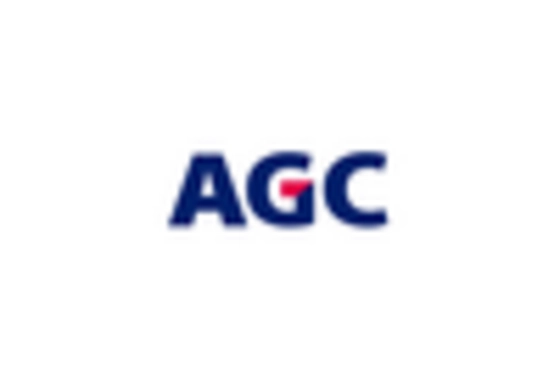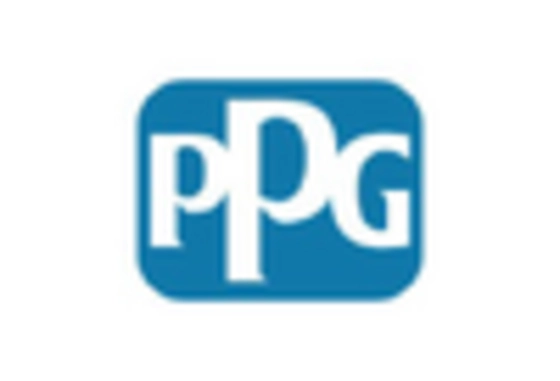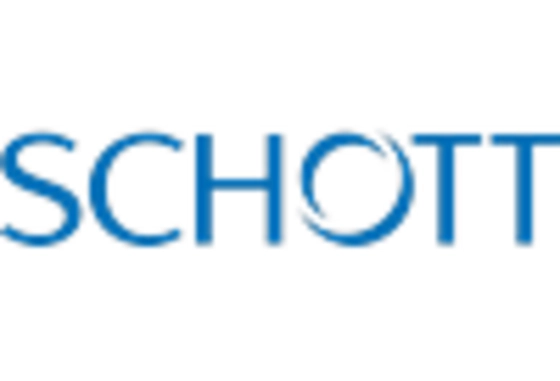Growth in Automotive Sector
The Laminated Glass Market is poised for growth due to the expansion of the automotive sector. With the increasing production of vehicles, particularly electric and hybrid models, the demand for laminated glass is expected to rise. Laminated glass is utilized in windshields and side windows, providing enhanced safety and acoustic performance. In 2025, the automotive industry is projected to grow at a compound annual growth rate of around 4%, which could lead to a corresponding increase in the demand for laminated glass. This trend indicates that the Laminated Glass Market will likely benefit from the automotive sector's growth, as manufacturers seek to enhance vehicle safety and comfort.
Increasing Construction Activities
The Laminated Glass Market is experiencing a surge in demand due to the increasing construction activities across various sectors. Urbanization and population growth are driving the need for residential, commercial, and infrastructural projects. In 2025, the construction sector is projected to grow at a rate of approximately 5.5% annually, which is likely to bolster the demand for laminated glass. This material is favored for its safety features, sound insulation, and aesthetic appeal, making it a preferred choice for architects and builders. As more projects are initiated, the Laminated Glass Market is expected to benefit significantly from this trend, as laminated glass is increasingly utilized in facades, windows, and interior applications.
Rising Awareness of Safety Standards
The Laminated Glass Market is witnessing a heightened awareness regarding safety standards in construction and automotive sectors. Regulatory bodies are enforcing stringent safety regulations that necessitate the use of laminated glass in various applications. For instance, laminated glass is known for its ability to hold together when shattered, thereby reducing the risk of injury. This characteristic is particularly crucial in high-rise buildings and vehicles. As safety regulations become more rigorous, the demand for laminated glass is anticipated to increase, thereby propelling the Laminated Glass Market forward. The emphasis on safety is likely to drive innovation and product development within the industry.
Technological Innovations in Manufacturing
The Laminated Glass Market is benefiting from technological innovations in manufacturing processes. Advances in production techniques, such as improved interlayer technology and automated manufacturing systems, are enhancing the quality and performance of laminated glass. These innovations not only improve the durability and safety of the product but also reduce production costs, making laminated glass more accessible to a wider range of applications. As manufacturers adopt these technologies, the Laminated Glass Market is likely to see increased competition and product differentiation, which could further stimulate market growth. The ongoing focus on innovation suggests a dynamic future for the Laminated Glass Market.
Sustainability Trends in Building Materials
The Laminated Glass Market is increasingly influenced by sustainability trends in building materials. As environmental concerns gain prominence, builders and architects are seeking eco-friendly materials that contribute to energy efficiency. Laminated glass, which can be produced using recycled materials and offers superior insulation properties, aligns well with these sustainability goals. The market for green building materials is expected to grow significantly, with laminated glass playing a crucial role in achieving energy-efficient designs. This trend suggests that the Laminated Glass Market may experience a boost as more projects aim for sustainability certifications, thereby enhancing its market presence.


















Leave a Comment